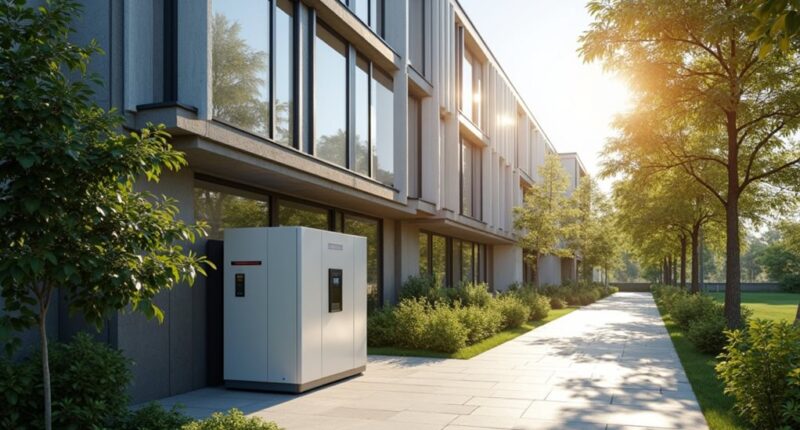AI is shaking up building efficiency with smart inverters and phase-change materials. Smart inverters act like brainy traffic cops for energy, balancing solar use and electric demand effortlessly. Meanwhile, phase-change materials are like cozy blankets that store and release heat, keeping spaces comfy. Together, they not only optimize energy flow but also bolster occupant comfort, making buildings feel as snug as a bug. Curious how the magic happens? Stick around to uncover more fascinating insights.
AI: The Game Changer for Building Efficiency
As buildings around the world endeavor to become more efficient, artificial intelligence (AI) is stepping in like a superhero in a hard hat, ready to save the day—and a lot of energy in the process. With the power to reduce energy use by up to 40%, AI is transforming the way smart buildings operate.
Using clever tricks like Model Predictive Control (MPC) technology, it can adjust heating, ventilation, and air conditioning (HVAC) systems, lighting, and even shading based on occupancy, weather, and schedules. Imagine your building as a responsive friend, always adjusting the thermostat just right, depending on who’s home and what the weather is doing outside.
But AI’s talents don’t stop there; it plays well with renewable energy sources too. By integrating with solar panels, AI can forecast energy production and balance consumption, ensuring that no sunlight goes to waste. It dynamically adjusts energy usage during peak demand, like a savvy shopper waiting for a sale. Developing a sustainable strategy plan can help businesses align their efficiency goals with long-term operational objectives.
Plus, with predictive maintenance, AI takes on the role of the ultimate building caretaker, forecasting equipment failures before they happen, reducing costly downtime, and extending system life. This proactive approach not only minimizes disruption to building occupants but also enhances overall operational efficiency. Furthermore, the use of AI in building efficiency can lead to a significant reduction in energy consumption and emissions by up to 19%.
And here’s where it gets even more impressive: AI-equipped smart grids analyze data across cities to optimize energy flow. These grids don’t just manage energy; they dance with it, adjusting usage and balancing production with consumption seamlessly.
On the occupant side, AI is like a personal assistant for comfort. It customizes temperature and airflow based on individual preferences, learning behaviors as it goes. No more fighting over the thermostat—AI has got it covered.
Real-time fault detection is another feather in AI’s cap, swiftly alerting technicians to issues like leaking ducts. All of these features work together, making buildings not just energy-efficient but also cozy and reliable, proving that AI isn’t just a buzzword; it’s the future of building efficiency.









